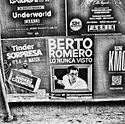My first recollection of Royal-X Pan was in 1956 in its SO (special order) version. A friend got some and used it on an assignment to photograph a construction site at dusk. It probably first appeared sometime in 1955. As an SO film, it came in sheet film sizes. It was at least available in 4X5 and 8X10, I don't know about other sizes. A few months later, it became available as a regular product under the label Royal-X Pan and with a gray stripe on the boxes. The initial sizes were sheet film and 620. Remember, Kodak made some professional level 620 cameras at that time. I'm not sure if 120 was in the original set of film sizes, but, if not, it followed shortly. The film was rated at ASA 650, but the recommendations were to expose it at 1250 and above. 1600 was usual, and it was often pushed to even higher speeds, with an expected loss of quality. Some experiments yielded some satisfactory surveillance photos at ASA 25000. The film had very coarse grain and low sharpness, but you could make acceptable 8X10s from a 4X5 negative. Smaller negatives gave pretty terrible results. Higher speeds gave worse grain and higher contrast. Development was usually in DK-50, although people tried all sorts of things, like UFG and D-76 with 10X borax (20g/l instead of 2). Royal-X Pan continued to be offered until at least the late 1970s. It was superseded by TMax P3200, which (I believe) only came in 35mm.
Royal-X Pan was never offered in 35mm. But 35mm users made use of another SO product of nearly the same speed. That film became Kodak 2485 High Speed Recording Film. The grain was about as bad as Royal-X Pan, but it was a bit sharper and it had extended red sensitivity. It could be pushed, but not as much. Photographers used it for extreme grain. It was available in 35mm and 70mm long rolls (Estar AH base), and it may have shown up in some sheet film sizes on special order (I've seen RAR recording film in 4X5 sheets, but I'm not sure about this kind).
In the previous discussion, there has been some confusion between Kodak Royal Pan and Kodak Royal-X Pan. This confusion has always existed. They a two very different films. Kodak Royal Pan was available only in sheet film sizes. It was a high quality, fine grained films used extensively by studio and professional photographers. It was rated at ASA 400, but many used it at 250.













